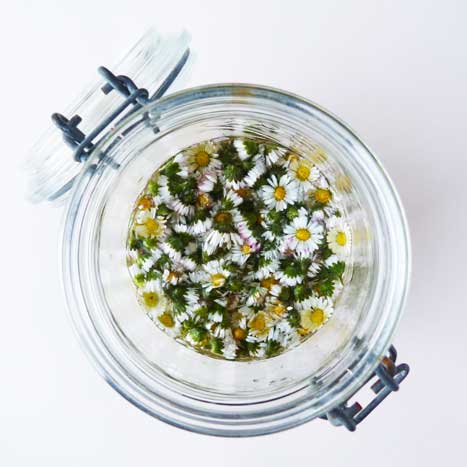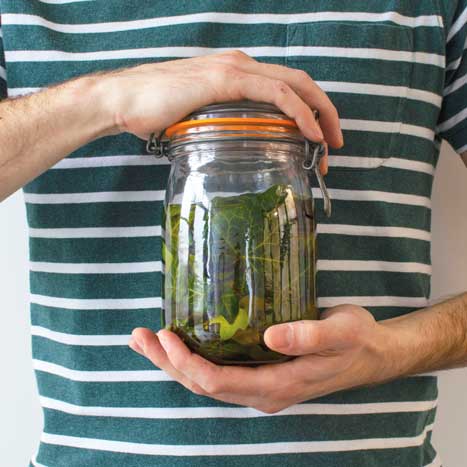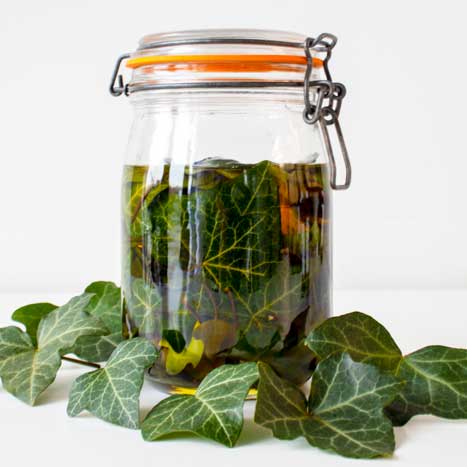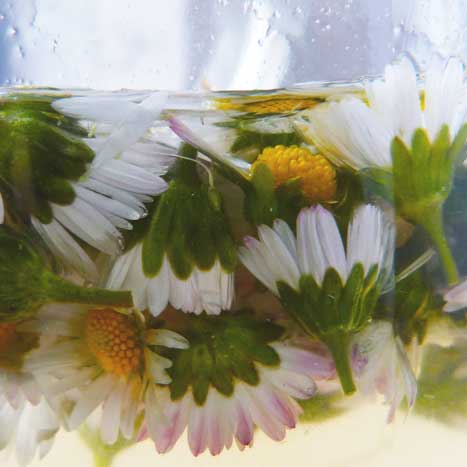Making your own spring oil macerates
Summary
Summary
Oily macerates are made by macerating leaves, flowers, roots, seeds or branches of aromatic and medicinal plants in a vegetable oil.
After a long maceration, the liposoluble active principles of the plant will diffuse into the vegetable oil. These active ingredients may be aromatic compounds, pigments or tannins.
Once filtered, oily macerates are fabulous skin care products. They can be used on their own for massage or targeted skin care, or as part of a balm, cream or oily serum recipe.


It all depends on the use of the macerate! The vegetable oils most frequently used to make oily macerations are sunflower and olive. Sunflower oil is frequently used to make sun macerations for the face, because of its neutrality (little smell) and its good absorption by the skin, without leaving a greasy film. Its high vitamin E content also makes it a stable vegetable oil that is not susceptible to rancidity.
Olive oil, richer and more fragrant, allows a good conservation of the macerate in time and will be more adapted for targeted care. It is frequently used as a base for calendula, plantain and arnica macerates, to name but a few.
For more "precious" macerates, such as rose macerate, you can choose more specific oils such as jojoba, avocado, sweet almond, sesame or macadamia vegetable oils.
An oily macerate can be made either cold or hot. The hot method consists of slightly heating the oil infused with plants to accelerate the release of the active ingredients. This method takes less time than maceration over several weeks, but there is a risk of altering the active ingredients of the plant if the heat is too strong.
In this dossier, we will only present the cold solar maceration method, which preserves the benefits of the plants and provides the best quality macerations.

Renowned for its draining action, ivy macerate is used in all body care products to improve the figure and shape. It is used in massage to fight against cellulite. Ivy macerate is also known for its healing action and for soothing rheumatic pains.

Bellis macerate is used in bust care for its tightening and firming effect. This beautiful spring macerate can also be used in face or body massage to soften and beautify the skin.





